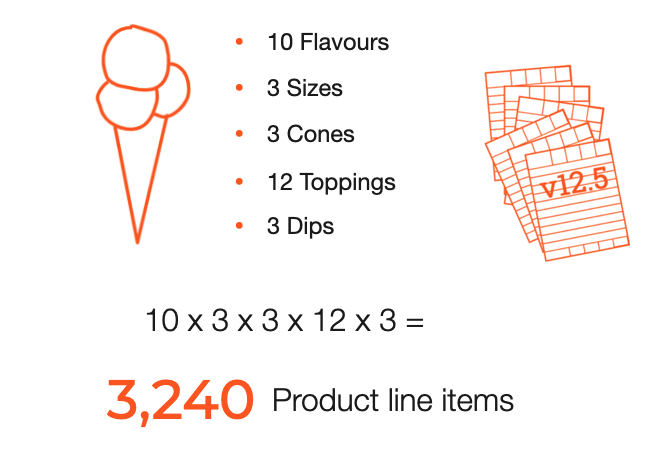← Flexile Blog
The Ultimate Guide to B2B Sales Process - Chapter 3
Sales Systems - What is CRM? What is CPQ? What do I need???

Alright readers, this is where the rubber meets the road. The first two chapters were just to warm you up and get you in the zone!
Now that you understand the importance of a well thought-out Sales Process and you have reviewed your own, it’s time to implement the systems you need to support your process.
CRM (Customer Relationship Management) in 2021 is a rather nebulous term that originally referred to a system that combined your pipeline from an Excel spreadsheet and your customer contact details in one system. Today however, CRM encompasses a vast array of features while still revolving around the storing of your customer data. CRM vendors will attempt to convince you they can run your entire business (everything from sales to marketing to support) in their platform. But this is not advisable, and in most cases, you should avoid getting locked in to one platform. “A single place to see all your customer related data” is a good way to think of where you can and should consider taking CRM.
Some familiar names in the CRM space are Salesforce, Microsoft Dynamics, Hubspot, Zoho CRM and Pipedrive to name a tiny sliver of the choices available. And if you are a little older you may remember such CRMs as ACT or Siebel *shudder*.
Ensure your CRM implementation is right from day dotTo me, a good CRM implementation is key to running a sales team and enforcing your Sales Process. If you can’t capture it and report on it, how do you manage it and track it?
The rub for a lot of people is getting a good implementation of CRM. CRM is either self-serve setup and out-of-the-box functionality for simpler systems like Pipedrive and Hubspot or for larger businesses that require more features and more customisation you need a CRM Implementation vendor to customise it for you - unless of course you are lucky enough to have the skills and time in house. If you fall into this category you are probably considering Salesforce and Microsoft Dynamics, or even Netsuite.
Finding a good company who understands your industry to implement CRM for you can be a real challenge. Unfortunately, there are a number of cowboys out there that just want to charge you a day rate and will build anything you want irrespective of whether it’s a good idea. They will also often convince you to customise more than is needed up front because - more money for them!
My advice for all CRM implementations is to keep it as vanilla as possible up front, just make the minimum customisations to get you up and running and then use the system. Once you understand your needs, then make more customisations. Remedying over-customisations can be timely and costly so start simple.
What should I use CRM for?Use CRM to store your basic customer data such as:
- Accounts (company/organisation name)
- Contacts (the individuals that you deal with at the Accounts)
- Leads (if you need this explained we are in trouble…)
- Opportunities (sometimes called Deals, Opportunities record all the data related to a sales opportunity)
- Contracts (once you ‘win’ the Opportunity you should record the details as a Contract especially if it is recurring revenue and you have a contract term you need to track)
Of course, as mentioned above CRM can do much more but keep it simple to start with. I assure you that you will be much happier in the longer term.
What about Products and Pricing?Now we are getting to the fun part, and by fun, I mean painful :-)
Let me see if I can easily explain the wonderful complexity of getting your products into CRM (Deep breath everybody).
So imagine you sell ice-cream (not very B2B but stick with me, who doesn’t love ice-cream?) and you have:

Seems simple right? Well not really because of the way CRMs store products as line items this would require you to add 3,240 (10x3x3x12x3) ’products’ to CRM to properly track what you have sold.`
Now imagine if you have ice-cream parlours in three countries (so three currencies to deal with) and you have a retail rate and a special customer rate for your loyalty card holders. Now you have to add 19,440 price records. And that doesn’t take into account products that don’t work well together - for example, a lemon sorbet with chocolate topping!
Easy in Excel, hard in CRM - and yes I know you can manage it in Excel and just upload it to CRM right? Sort of.
When I was at Vocus we had over 10,000 products and we traded in three currencies (USD, AUD & NZD) and did we have an amazing spreadsheet to manage this! We had our spreadsheet person who maintained and managed this highly complicated spreadsheet and then exported the data and uploaded it to CRM as needed. This worked perfectly fine (if you ignore the $100k plus salary paid to this person who spent most of their time just managing products and pricing to be uploaded to CRM) or at least we thought it did…
A key part of my role at Vocus was to sign off on customer orders over a certain size as a last line of defence in our Sales Process. One day an order came to me for an International Ethernet service that had, to my eyes, been heavily discounted (50% off) but I could not find any record of the discount and technically a quote should not be able to be done without an approval. When I dug into it I discovered that due to a simple calculation error in our spreadsheet we had been selling a small range of services at heavily discounted prices for about a month.
Calling our large international customer to say sorry but we made an error and need to retract that fantastic price you signed off on - brutal!
Don’t forget also that your salespeople have to add products to an Opportunity or Opportunity Quote and wading through 10,000+ product records to find the exact one you need? Nope, this is beyond a reasonable person’s patience/effort/care…
So you want to get your products into CRM but you have enough variables or complexity in your product to make it difficult (you are also now slightly scared by my horror stories) and you want quoting to be easy for sales people. So what do you do?
CPQ to the rescue!Configure Price Quote (CPQ) software can be the answer to your dreams.
CPQ is not well understood by many and even those that have an in-depth knowledge may not understand your products and may build what you want, not what works. So pick very carefully and if you can find someone who also understands your products, pay more - maybe even double - for this person to implement your CPQ.
How does CPQ work?Again, like CRM the acronym gets pretty stretched and varies from basic quoting tools (CPQ Lite) to fully fledged CPQ systems like Salesforce CPQ, Apptus and of course, Flexile. A true CPQ system will have two major areas:
- Product Catalogue
- Quoting/Configuration
The Product Catalogue stores all the data about your products and pricing and the business rules you apply (lots of ‘if this, then that’). Once you have input all of your products and added your pricing and business rules then you need to make them easily quotable by your sales team.
Typically the quoting/configuration part of CPQ is integrated with your CRM and accessed from inside the Opportunity. Good CPQ configuration is as much about how well you capture all your product data as about how easy you make it for your sales team to use. There can be real trade-offs here and this is where experience can really come to the fore. Ultimately, good sales systems are there to help us sell more, which can easily be forgotten in the desire to have an amazing solution.
Gartner has (quite rightly) called into question the usability of CPQ systems (Klock, Lewis, Hilbert,(2018) Gartner CPU Magic Quadrant (2018)) so make sure you are 100% clear on how easy/hard or slow/fast it will be to quote. Often you don’t get a CPQ quotation process demoed and experiencing it when you’re deep into your implementation process can be too late to change.
CPQ is HARDCPQ is a journey. Don’t expect to get it 100% right the first time (although if you do, we will hire you immediately). And like implementing CRM, don’t try to solve every problem up front. ‘Hasten slowly’ and plan it out in stages. Focus on the key areas causing your business pain - for example, incorrect quoting, bad orders, pre-sales/technical sales bottlenecks etc., and pick one of these to tackle first. You don’t need everything in CPQ to start seeing benefits.
In the next chapter we will look at the other systems that feature in Sales Process such as Marketing Automation and Document Creation and look at how they all ‘hang’ together.
Key Takeaways
- Start with a CRM but don’t treat it like a CPQ. CRMs are for storing your customer data, not building quotes.
- CPQs are for storing product data, pricing and business rules as well as for quoting/configuration.
- CPQ is a journey so hasten slowly and plan accordingly.

Matt Hollis
Co-founder & CEO at Opvia
Other Chapters in this series
Chapter 1 - Easy to Sell, Easy to Buy. Chapter 2 - Business Benefits of a Great Sales Process.
Get in touch
or...
Book a Demo